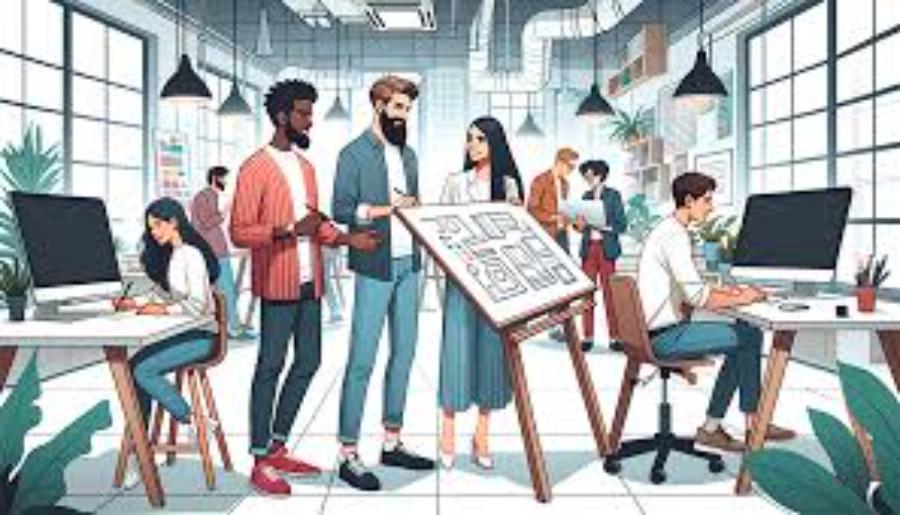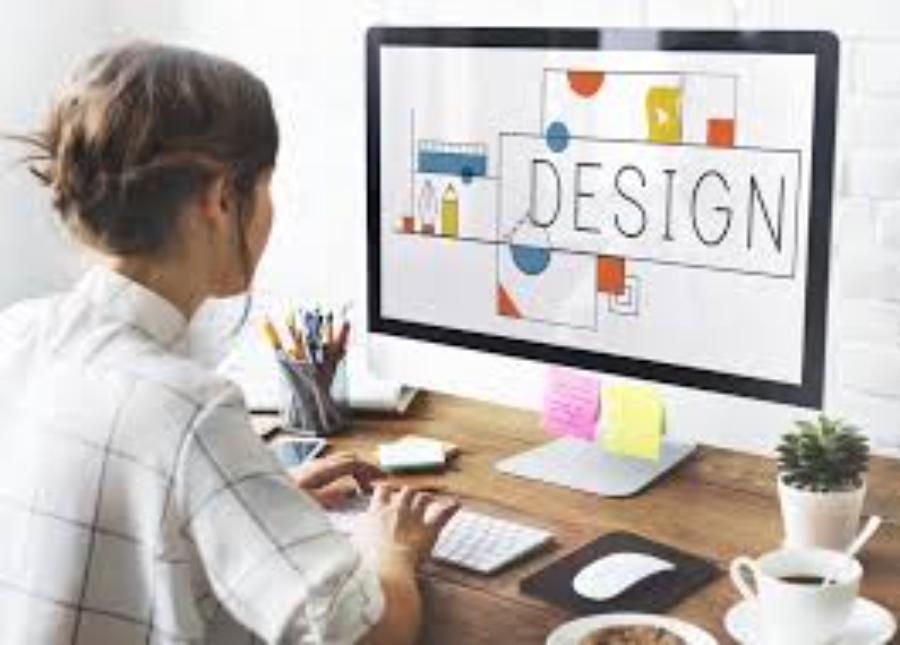Best Selling Products
Understanding the Designer Job: Everything You Need to Know
Nội dung
- 1. Who is a designer and what is their role?
- 2. Popular design fields
- 2.1. Graphic Design
- 2.2. Web & UI/UX Design
- 2.3. Interior Design
- 2.4. Fashion Design
- 3. Daily work of a designer
- 4. Skills needed to become a designer
- 4.1. Creative skills
- 4.2. Skills in using design tools
- 4.3. Communication skills
- 4.4. Time management skills
- 5. Opportunities and challenges in the design industry
- 5.1. Career opportunities
- 5.2. Challenges facedHighly Competitive : The design industry is highly competitive, requiring you to constantly learn and improve your skills.
- 6. How to get started in design?
- 7. Conclusion
Learn what a designer does, the skills needed, and career opportunities in this creative field. Explore the details to gain a better understanding of the design industry.

The design profession, also known as designer, has become one of the most attractive professions today. However, not everyone clearly understands what a designer's job is, what skills are needed and how to develop in this field. The following article by sadesign will provide a comprehensive view of the work of a designer, helping you explore more deeply into this creative profession.
1. Who is a designer and what is their role?
Designers are responsible for creating visual products that convey messages through images, colors, and layouts. Their job is not just to "make things look good," but also to ensure that the design meets specific goals, from communication, marketing to improving the user experience.
.jpg)
The role of a designer can vary depending on the field they work in, including graphic design, web design, interior design, fashion design, and many others. Designers need to combine creative thinking, technical skills, and the ability to understand market needs to create effective design solutions that meet the project goals or client requirements. They play an important role in building brands, conveying messages, and creating lasting value for products or services.
2. Popular design fields
A summary of specific popular design areas includes:
2.1. Graphic Design
Graphic Design is one of the most popular design fields and plays an important role in many industries today. With the goal of conveying messages visually and creatively, this field combines art and technology to create products such as logos, posters, packaging, advertising publications, user interfaces and many other types of media. Graphic design requires not only aesthetic skills but also an understanding of market trends, customer psychology and the ability to use modern design tools proficiently. This is a field that is constantly innovating and opening up many opportunities for creative enthusiasts.
Graphic design focuses on creating visual images to convey messages. Some typical products include logos, posters, promotional materials, and product packaging.
Main job : Building brand identity, designing advertising images, creating graphic content.
Commonly used tools : Adobe Photoshop, Illustrator, CorelDRAW.
2.2. Web & UI/UX Design
Web & UI/UX Design is one of the popular and important design fields in today's digital age. It is a combination of art and technology to create intuitive, friendly and effective experiences for users when interacting with digital products such as websites, mobile applications or software.
A quality UI/UX design not only ensures aesthetics but also focuses on utility, usability and consistency in the interface, thereby enhancing user satisfaction and brand value for the business. This field focuses on building website and application interfaces that are beautiful, easy to use and provide the best user experience.
Main job : Design layout, create prototype, optimize user experience.
Commonly used tools : Figma, Sketch, Adobe XD.
2.3. Interior Design
Interior Design is one of the popular design fields and plays an important role in creating a harmonious and comfortable living and working space. This is the process of combining art and science to optimize space, ensuring a balance between aesthetics and function. A professional interior designer not only needs to be creative but also has a deep understanding of materials, lighting, colors, and other technical factors to meet the needs and lifestyle of customers. This field is growing strongly, especially in the context of the need to personalize living space becoming a prominent trend in modern society. Interior design involves arranging living and working spaces, ensuring comfort and aesthetics.
.jpg)
Main job : Floor plan design, interior selection, space color coordination.
Commonly used tools : AutoCAD, SketchUp, 3Ds Max.
2.4. Fashion Design
Fashion Design is one of the most popular and creative fields of design, requiring a harmonious combination of art, technology and market trends. This is a profession that not only focuses on creating beautiful clothes but also focuses on practicality, comfort and the ability to express the wearer's personality.
Fashion designers need to have extensive knowledge of materials, colors, styles as well as the ability to grasp and predict trends to meet the diverse needs of customers. In addition, constant innovation and creativity are key factors that help this field maintain its appeal and important position in the global fashion industry.
Main job : Sketching ideas, creating designs, choosing materials.
Commonly used tools : Adobe Illustrator, CLO 3D.
3. Daily work of a designer
A designer’s day-to-day work typically involves researching and analyzing project requirements, creating design ideas, and implementing them into specific products such as logos, user interfaces, or media publications. Designers also need to work closely with other departments such as marketing, product development, and clients to ensure the final product meets the set goals and standards.
In addition, staying up to date with new design trends, managing time effectively, and continually improving personal skills are important factors for a designer to stay competitive and grow in their career. However, their daily activities often include:
Design Concepts : Search for inspiration, sketch ideas based on client requirements or project goals.
Working with design software : Use tools to create visual products.
Communicate with customers or teammates : Understand the needs and expectations of stakeholders.
Edit and refine the product : Use feedback to improve and refine the design.
4. Skills needed to become a designer
.jpg)
To be successful in design, you need to develop some important skills:
4.1. Creative skills
Creativity is the core element of design work. A designer needs to know how to combine new ideas with practical requirements to create unique products.
4.2. Skills in using design tools
Proficiency in design software is a must. Depending on your field, you may need to be familiar with tools like Photoshop, Illustrator, Figma, or AutoCAD.
4.3. Communication skills
Good communication helps you understand customer requirements, present ideas and handle feedback effectively.
4.4. Time management skills
A designer often works on multiple projects at once, so time management skills are essential to ensure work is completed on time.
Finally, the spirit of learning and updating new design trends will help you always innovate and develop in this competitive field.
5. Opportunities and challenges in the design industry
The design industry is currently facing many opportunities and challenges in the context of continuous development of technology and market demand. In terms of opportunities, the explosion of digital platforms, artificial intelligence and virtual reality has opened up many new creative spaces, helping designers easily reach global customers and enhance product value.
5.1. Career opportunities
Increased Demand : With the development of technology and communication, the demand for design in fields such as marketing, branding, or product development is increasing.
Freelance : In addition to being a full-time employee, you can take on personal projects, work flexibly and increase your income.
5.2. Challenges facedHighly Competitive : The design industry is highly competitive, requiring you to constantly learn and improve your skills.
Time pressure : Completing a project on time while ensuring quality is no small challenge.
6. How to get started in design?
If you want to become a designer, start with the steps listed below:
Learn Design Basics : Learn design principles like color, layout, and typography.
Proficient in design tools : Familiarize and practice with specialized software.
Build a portfolio : Create a collection of personal projects to showcase your skills and style.
Find an internship or freelance job : This is the best way to gain experience and develop your career.
7. Conclusion
Being a designer is not just about creating beautiful products, but also requires creativity, skills and problem-solving thinking. Hopefully, this article has helped you better understand the work of a designer and how to start your journey in this field. With passion and effort, you can absolutely succeed and shine in this exciting design industry.












































